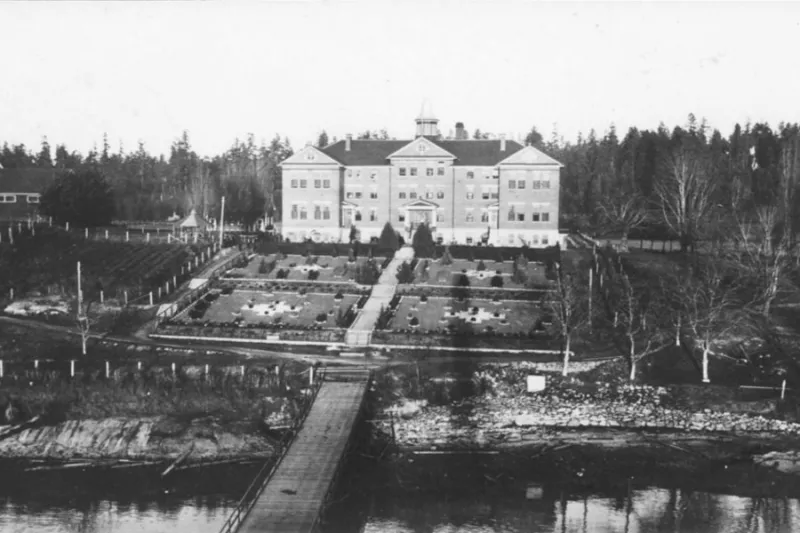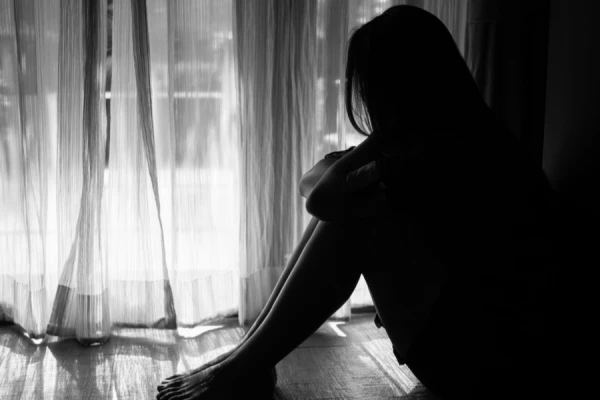
Washington D.C., Jul 13, 2021 / 15:00 pm (CNA).
A Canadian First Nations tribe last week announced more than 160 unmarked graves were found at the site of a former Catholic-run residential school in British Columbia.
Chief Joan Brown of the Penelakut Tribe, a First Nations community which lives on islands off the coast of British Columbia, announced the discovery in a July 8 letter which was widely reported on July 12. The unmarked graves were located on the grounds and foreshore of the former Kuper Island Industrial School on Penelakut Island, once dubbed “Canada’s Alcatraz.”
It is not clear when the graves were discovered, or how they were discovered. “Kuper Island” was renamed “Penelakut Island” in 2010, in honor of the Penelakut tribe.
“On behalf of the Penelakut Tribe, Chief Joan Brown and Council, and Elders, we are inviting you to join us in our work to raise awareness of the Kuper Island Industrial School, and Confirmation of the 160+ undocumented and unmarked graves in our grounds and foreshore,” the letter stated.
The tribe will be hosting a “March for the Children” on August 2, as well as healing sessions for both Indigenous and non-Indigenous allies.
“We know healing can’t happen in one day,” the letter stated. “There are many truths to be told and heard.”
The Kuper Island Industrial School operated from 1890 until 1975. It was initially operated by the Roman Catholic Diocese of Victoria; in 1907 the Missionaries of the Company of Mary took control of the school; from 1957-1969 the school was run by the Oblates of Mary Immaculate.
The Canadian government took over the school in 1969, and the school building was demolished in 1980.
The Canadian federal government established the residential school system beginning in the 1870s, as a means of forcibly assimilating Indigenous children. The last federally-run school closed in 1996. The final report of the Truth and Reconciliation Commission, a body established to report on the history of the residential schools, said the system was part of a policy of “cultural genocide.”
According to the commission, schools were poorly equipped and staffed, neglect of students was “institutionalized,” and children were vulnerable to physical and sexual abuse. The commission identified death records for 120 students at the Kuper Island school, including two sisters who drowned in 1959 in an attempt to escape the school.
There were also documented cases or suspected cases of sexual abuse of students at the school.
In 1995, Oblate Brother Glenn Doughty, who served at Kuper Island school, was convicted of six counts, including indecent assault and gross indecency, stemming from his time at the school. In 2000, he was convicted on 36 sex-related counts, stemming from his time at Kuper Island and at another residential school in Williams Lake.
Federal officials in 1939 recommended that school staff be moved out of the province due to suspected sexual abuse of students. Provincial police refused to return runaway students to the school that year due to suspected sexual abuse, the commission reported.
The remote location of the island drew comparisons to Alcatraz, a former federal prison located on an island off the coast of San Francisco. Several children drowned trying to escape the school. Another student was reported to have committed suicide in 1966, although family members of the student, Richard Thomas, said in a 1996 Vancouver Province article that he may have been murdered.
In the 1930’s, doctors conducted medical experiments on children at the school, according to the archives of the Royal British Columbia Museum
Deaths from disease were common at residential schools. In 1908, the Kuper Island school principal described the school as “unsanitary” and “ruinous,” according to the commission. An 1896 survey reported that of 264 former students at Kuper Island, 107 of them had died.
Bishop Gary Gordon of the Diocese of Victoria said in a June 3 statement that the diocese’s archival records related to the Kuper Island and Christie residential schools had previously been forwarded to the Truth and Reconciliation Commission, which operated between 2008 and 2015.
Speaking on July 13, Prime Minister Justin Trudeau said the Kuper Island discoveries “only deepen the pain that families, survivors and all Indigenous Peoples and communities are already feeling, and that they reaffirm a truth that they have long known.”
The announcement at Kuper Island follows other recent discoveries of unmarked graves at the sites of former residential schools.
In May, the remains of 215 children were found at the site of the former Kamloops Indian Residential School in British Columbia. In June, local Indigenous leaders announced that 751 unmarked graves were discovered at the site of the former Catholic-run Marieval Indian Residential School in Saskatchewan. In July, 182 more unmarked graves were announced to have been discovered at the site of the former St. Eugene’s Mission School in British Columbia.
More than two-thirds of the residential schools in Canada were run by Catholics or members of Catholic religious orders.
A number of Catholic and Christian churches in Canada – many of them on tribal lands – have been found ablaze in recent weeks in fires deemed either “suspicious” or cases of arson. Some Indigenous leaders have condemned the fires as unacceptable reactions to the discoveries of unmarked graves at former Catholic-run institutions.
Two more Canadian Catholic churches were destroyed in fires last week, and police have already charged a juvenile with arson in one of the burnings.
On Thursday, Holy Trinity Catholic Church near Redberry Lake, Saskatchewan was reported to be on fire. The historically Polish parish was no longer active, and the church building was sold to a local family in 2020.
Firefighters arrived too late to save the church building, but nobody was reported to be hurt in the fire. The burning was declared “suspicious” by the Royal Canadian Mounted Police, as there were no signs of fire in the grass surrounding the building.
On Friday, a former Catholic church on Kehewin Cree Nation near Bonnyville, Alberta was destroyed by arson. The church, which was called Our Lady of Mercy, was vacant and had been set to be demolished. Nobody was injured in the fire.
The Royal Canadian Mounted Police charged a youth with arson. The person’s name was not released to the media under the provisions of Canada’s Youth Criminal Justice Act, but the suspect is set to appear in court in September.
Bishop Stephen Hero of Prince Albert said that the burning of Holy Trinity church was a “terrible, shocking thing,” and added that there “are a lot of good memories” at the former church.
“So even if the church hasn’t been used as a parish for a long time, or for worship, it still has a lot of associations,” said Bishop Hero.
Since the Our Lady of Mercy church building was declared condemned, Masses have been offered at the community recreation center on Kehewin Cree Nation.
Fr. Jhack Diaz, who ministers to the people of Kehewin Cree Nation, said that he found out about the fire by text message. He told CTV news that he was “really, really sad” and “shocked” to hear about the arson.
“Kehewin is a beautiful community. People are welcoming and very friendly and religiously motivated,” said Diaz. “I really don’t understand why people are doing this.”
If you value the news and views Catholic World Report provides, please consider donating to support our efforts. Your contribution will help us continue to make CWR available to all readers worldwide for free, without a subscription. Thank you for your generosity!
Click here for more information on donating to CWR. Click here to sign up for our newsletter.





“The Canadian government took over the school in 1969, and the school building was demolished in 1980.”
It would help to know whether they were always unmarked, or whether they were marked and through neglect in the 40 years since the building was demolished the markers have disappeared.